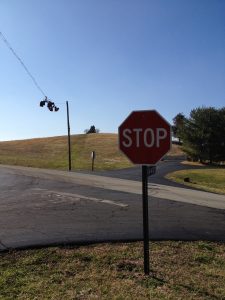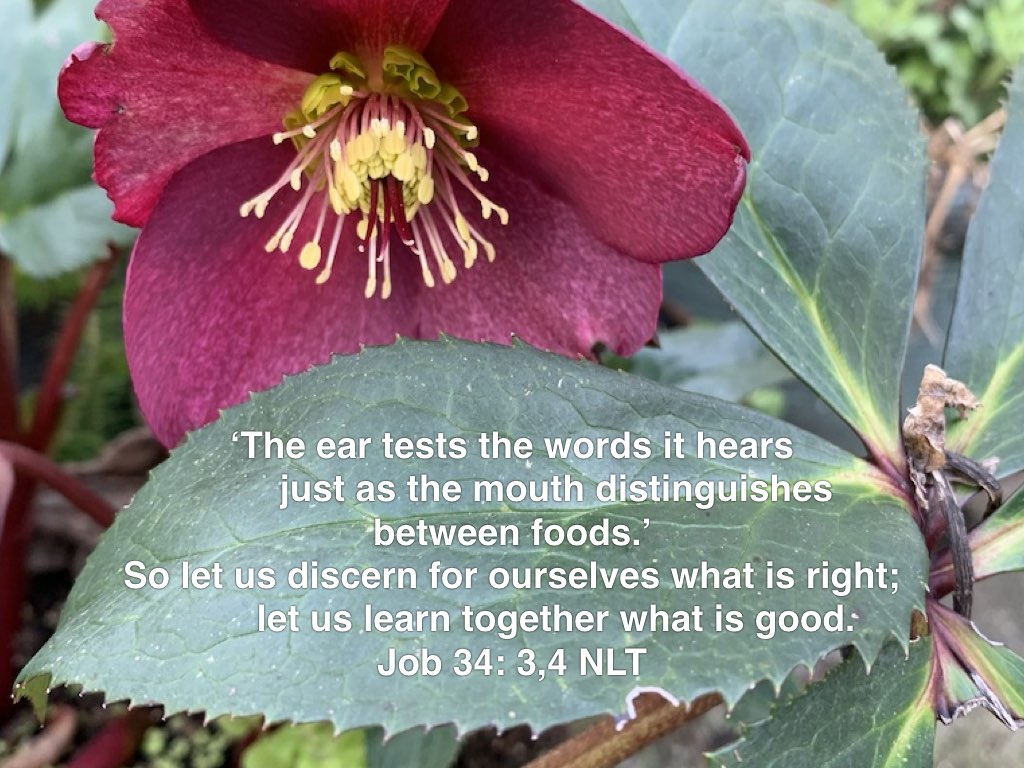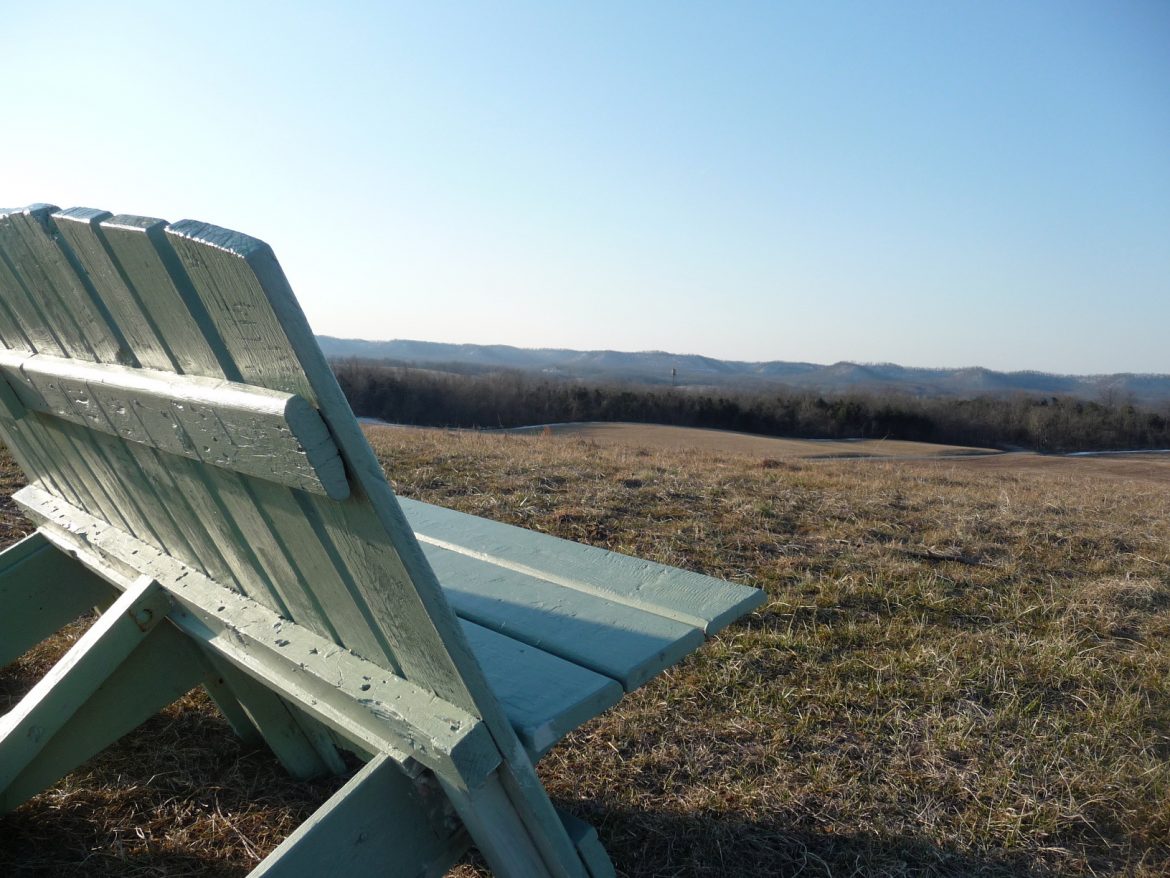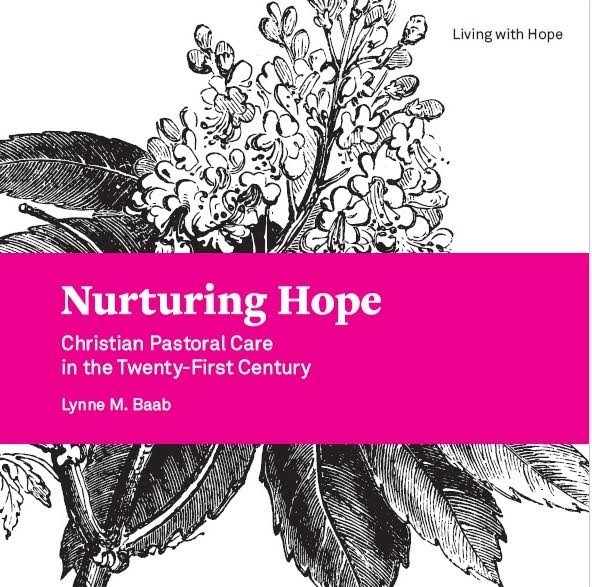by Christine Sine
A couple of days ago I met with a friend who used to work at a well known megachurch. He left the church because of his discomfort with their discernment process. There was no place for the congregation or in fact for the leadership team to contribute to the direction of the church. Tragically this is a pattern that I see in many churches.
Fortunately for me, a good Quaker friend introduced me to the process of group discernment many years ago and we were able to implement it with our Mustard Seed Associates team and Board.
The amazing thing is that this process not only drew us closer to God and to each other but also made us more sensitive to the moving of God’s spirit in our lives and those of our colleagues at other times.
It made us more creative as we listen to the diverse ideas and possibilities that God was unveiling through others.
I think that group discernment is an essential part of any discernment process and believe that whenever we think we have heard from God, we need to bring together a group of friends and colleagues to help us truly discern what God intends us to do. None of us alone hear God clearly all the time but together with friends we can find far greater accuracy in our discerning.
- Centering – (Recognizing the presence of God). It is always helpful to start with a centering prayer or activity that stills our minds and brings us into a place of attentiveness to God. Centering is an intentional way to gather the group and help us begin to leave behind our busy schedules and the demands on our time. We each arrive at a meeting with an entire world dragging behind us. For each of us, that world is unique. So taking time to make a conscious choice to set aside those demands and distractions is helpful. That’s what this opening exercise is all about. Here is a prayer that I wrote last year to help me with this process:
May the centre of all things be Christ
May the way of all things be Christ
May the truth of all things be Christ
Behind, before, within, without
May the life of all things be Christ
- Other suggested centering exercises are: to light a candle as a representation of Christ’s presence; join hands in a moment of silence; sing a song; say the Lord’s prayer or another prayer and then sit in silence. I have also written several breathing prayers that we have found useful in this process.
- Gathering silence before the meeting. Sitting in silence for a few minutes extends this time of stillness before God. This is a time for each of us to let go of our grip on ourselves and our desire for control over both the process and the decisions that come out of it. We each need to acknowledge that we know nothing and must trust in God for all that comes out of the meeting. In this place of stillness we remind ourselves that God is in a different dimension beyond cognitive knowing.
- Relating – (Checking in with each other) Since business is now a practice of discerning God’s desires, our ability to be sensitive to the movement of the Spirit must be encouraged. This step a spiritual practice that enables us to reconnect with one another in a way that grounds us in the Holy Spirit, connecting us more deeply to the presence of God. This is an extremely important part of the process in which as we actively listen to each other share we become aware of who the Spirit of God is at work in our lives.
There are many ways to do this and we are finding that as we grow together as a community that we want to expand and deepen the ways that we listen to each other using this as a time to affirm and strengthen the work that God is doing to draw us into a more intimate relationship with himself.
Possibilities include:
- Prayer of Examen on your experience of God this last week: Consolations (those things that have given you a deep sense of life-giving connection to God, others & yourself) and Desolations (those things that have made you lose your connection to God)
- Sharing the transforming edge of God’s activity in your lives. Where are you most aware of God’s transforming work in your life? What would give God the greatest opportunity to continue that work? What is the greatest hinderance to what God is teaching you?
- How is it with your soul? This is a question we can only ask when we are in a long term trusting relationship with our discernment group. Sharing our sense of our own spiritual state places each of us in a very vulnerable position. The willingness to keep this confidential is an essential element in this depth of group sharing.
- Lectio Divina. This is a very ancient contemplative prayer technique practiced at one time by all Christians and kept alive by the monastic tradition. It draws us into the presence of God opening our hearts and our minds to the activity of the Holy Spirit in and around us.
A second step in relating is to anticipate the week that is coming. What are you looking forward to? What are you less excited about? This step increases our sensitivity to the issues colleagues are struggling with as well as the joys they are anticipating. All of these might influence our ability to be fully present to God, our colleagues and our work during the coming week.
- Receiving, listening and reflecting. (Attending to God, listening) Once we have shared we take time to consider what God is saying in our midst through our personal situations. This step works from the assumption that God is busy in our midst. We spend time in silence listening to God looking for directions, threads and common themes considering how God is moving in our personal lives. We then ask the questions: Given what we’ve heard and shared, what is God doing among us or calling us to? How is that related to our vision as a staff or board? What are the implications of what we have heard for our lives and ministry?
If your staff or board has some directional/identity questions before it, you could introduce them here, even if at this point you don’t answer them, but merely see how your sharing might relate to any of them. “What is our calling as a staff or a board? What is God’s heart around our mission? What characteristics of God should we endeavor to represent to the world? Where are we experiencing energy but not doing anything about it? Where are we pushing forward and finding resistance?”
- Prayer of thanks for God’s activity in our midst. It is good before moving into the business for the day to spend time savouring the preciousness of all that has been shared, resting in the contentment of knowing that our lives are in God’s hands and giving thanks for both the good and the bad. Then we pray for request that have surfaced during our sharing.
- Responding (With this focus on God and God’s activity, we do the business at hand in a spirit of attentiveness) This is the point where we finally get to business. Oh wait, we’ve been doing business all along! This is simply the point where we introduce specific items that need discussion or decision. Once the foundation of feeling connected to one another and to God has been laid, then we can move forward with confidence into the tasks at hand…always keeping an eye on our attentiveness to the Spirit. If at any point we feel distracted from being rooted in Christ, we need to push ourselves back from the agenda, take a deep breath, recenter and reconnect.
- Returning and closing(offering ourselves and our efforts to God) are the final steps. Before rushing back out into the world, take a moment to prayerfully reflect over the course of the meeting. Ask yourselves where you felt close to God; where there seemed to be shifts in the discussion that opened you up to new ways of thinking; where there were blocks; where God seemed most present. Celebrate your experience of doing the work of the Church in the presence of God by naming some of these times and being grateful together. Allow your closing prayer to express your thanks and joy.
by Christine Sine
Monday we celebrate Martin Luther King Day. As I was thinking about it this morning and meditating on the love of God and the love stones on my altar, I was reminded of this responsive reading that I wrote several years ago. When we immerse ourselves in the love of God our hearts move towards what is right and good and just. I pray that all of us will take time this morning to think about what is right and just in the midst of the strident and often angry cries of the rich and powerful and of the media.
May we all seek what is right and just – for federal workers without pay; for migrants looking for a better life; for refugees forgotten and abandoned in squalid camps; for the homeless, the poor, those with other viewpoints from other, those that are persecuted because of ethnicity, religion or sexual orientation.
May we all seek what is right and just and join together to see God’s light shine in the darkness and God’s love reign throughout the earth.
By Lilly Lewin
This is a much longer post than I usually write. I talked last week about my practice of silence at the Abbey of Gethsemani. Here’s an article I wrote on Silence for Immerse Magazine back in 2012. It gives a good picture of how I got started in this practice and gives us some steps we can all take to add silence into or real lives. The hardest part is making the choice to begin.
I am sitting in my living room and it is totally quiet…well that’s not quite true. I can hear the ceiling fan whirring above my head, my dog is snoring at my feet, and every so often I hear a car on the road traveling home from work. In all honesty, silence is never really quiet, and it’s elusive. I could easily flip on NPR or the TV, or check up on the Carolina basketball game. Instead I am sitting alone, quiet, considering just why someone would want to practice silence on a regular basis.
Why do we need silence and quiet anyway?
In our culture, slowing down and being still is about as easy to do as winning the lottery. We definitely don’t get points in our culture for being quiet and taking time out. Instead we find ourselves surrounded by sounds and the stress of having three screens going at once. Father Matthew Kelty , a monk at the Abbey of Gethsemani, says that “too much input drowns our inner capacity to dialogue with God.” We need a clean break from the flood of data, an empty hard drive for a new beginning. All of us need to reboot our inner life with quiet, with the practice of silence.
When I started practicing silence I was in the middle of ministry in a small church. I was a type A workaholic-extrovert who was in charge of all Christian education, “birth to death,” and youth group too. Sunday’s were eighteen-hour days. At home, I had two elementary age sons and a husband with all their activities, and the regular stuff of laundry and dishes and distraction. Busy was my middle name. And REST was a four-letter word. In the midst of helping everyone else connect with God, my own spiritual life was bone dry. I was desperate.
What saved my life was a five-day silent retreat at the Abbey of Gethsemani near Bardstown, Kentucky, the home of Thomas Merton and the monks who are famous for their hospitality, work and prayer. The Trappist monks have been praying at this spot seven times a day since 1848. They make fudge and fruitcake, but as Fr. Kelty said, “the best dish we offer is the quiet.”
I am not a natural at being quiet. I grew up extremely Protestant and in the buckle of the Bible-belt where spiritual practices like silence and solitude were not even a part of the discussion of following Jesus. Nor were Trappist Abbeys. So the value of silence wasn’t even on my radar till I spent that first retreat at the Abbey. When I told a friend I was going for five days, she laughed and suggested I try one day first. But I knew I needed a full five days. Somehow I knew it would take me til Wednesday for the noise in my head to get quiet. Now I make an annual pilgrimage to Kentucky and my week of silence is a vital part of my walk with God. I also now wish the 5 days could be 10, and I need a smaller retreat every six months. I’m also putting mini silent retreats into my “real life”. That involves making time to get off facebook, keeping driving times silent, and deciding not to watch tv on certain days.
Baby Steps into Silence
Thomas Merton said, “ Silence helps draw together the scattered and dissipated energies of a fragmented existence. It helps us to concentrate on a purpose that really corresponds not only to the deeper needs of our being but also to God’s intentions for us.”
Silence takes practice. Taking time to practice silence is totally different from a daily quiet time, and it is different from studying the Bible on your own or with your small group. Practicing silence is time for Jesus to talk to you. It involves making space, holding space, and letting God fill it. Silence is like a blank canvas, or a blank page that we are giving to God. We are allowing him to fill the page, inviting Jesus to paint what he wants on the canvas. And it’s not always what I expect or have planned to happen. In my experience with silence, Jesus has done both great healing, allowing me to forgive myself and others, and provided great refreshment that enabled me to go back home with a renewed focus.
What will it take for you to be silent for a day? For a weekend? For a week? And where can you practice silence? Do you already know the place? Has it been waiting for you all this time?
I’ve learned that I don’t have to be a super hero or have the monastic call to practice silence, I just have to be willing to give the time and space to God. I have to give myself permission to take time off, to give myself the space to be silent and alone with God. If you’re an extrovert you’re not the most likely candidate to spend time alone in solitude and quiet. Many of us have a hard time being quiet for 5 minutes much less five hours or five days. Our silent retreats don’t have to start by reserving an entire week, you can also baby step into silence. Start small, and try spending ten minutes a day in intentional silence. Then, after a few days, spend fifteen minutes. And then, a few days later, spend a half an hour in silence. Work yourself up to spending an entire day being silent. I find the more I practice silence, the more I need it. I need the space in my heart intentional quiet brings. So start small or you can start BIG. Just START!
Permission for a Whole Day
You may be like me, so desperate for silence and so dry that you need to dive into a major silent retreat with both feet. Maybe it’s the only way you’ll actually do it! There are monasteries and retreat centers around the country that accommodate silence. These can be directed retreats (have certain things you do each day) or non-directed where you set your own agenda. I find on a five-day retreat that the first thing I do is sleep. I don’t even realize how tired I am till I have no responsibilities but to be quiet. And as they say at the Abbey, sleep is Holy. Some people sleep for two days! Then I read, take long walks, and pray with the monks a couple of times a day. I have yet to pray the hours all 7 times because that is not my goal. My goal is to be silent, to be still and to hear from Jesus.
So give yourself permission! You can do this!
Everyone has a unique practice of silence, and you know intuitively what you need in your life right now and how you best engage God. Be willing to obey what the Spirit is telling you, and have the courage to do that. Also be willing to try something new, like taking a long walk looking for how God speaks to you through nature, or writing a poem, or creating something in art. Things you might not have considered to be prayer practices before.
A Silence Toolbox
Perhaps you don’t need a major silent retreat. Maybe you just need to take a day off and get out of town to some place beautiful/scenic and just be alone with Jesus.
If you are going for a half-day or a day retreat, you don’t need to take anything but a snack, Bible and your journal. An open heart and open ears. You don’t need a phone. or your computer. You aren’t allowed to take work with you. Give your tasks away to others so the retreat isn’t forced into being a work session, and so you don’t have a massive to-do list when you return. That’s not rest, is it?
Give yourself permission to leave your Bible at home (especially if you’re tempted to use the time to start doing research for your next teaching series). Only take with you the things that help you hear from God. For me, that’s art supplies, journal, and my camera. On a week retreat at the Abbey, I tend to pack my car with all sorts of things, from clay to candles and post-it notes. I never know what God will use to speak to me. This much gear would drive other people nuts. My husband just needs a pen and his journal. Anything else is clutter to him.
Take paper and a pen, because you’ll need to write. As you are silent, stuff will come up that you will need to get out, stuff that usually has nothing to do with God. I call this “brain draining,” getting rid of your “to do lists” and all the other distractions, and busyness in your brain that keeps you from hearing from God. Even on a weekly silent retreat I do a brain drain almost everyday and sometimes multiple times a day. It let’s me release all my jobs, worries and responsibilities onto a paper, and get them out. Then I’m free to listen, and hear.
Starting Silence
Where do we begin our time in silence? Before you start consider your fears of silence and talk to Jesus about them.
Then let go of your expectations. There is no wrong way to be silent. Silence is emptying ourselves of our own agenda and receiving God’s agenda for us. Expect it to be awkward for a while; you’re walking on new ground. Consider how God has spoken to you in the past and how you best engage God. Does that involve a place or space outside? Does that mean going away from home, or can you be still with a cup of coffee on your deck?
Gather your supplies and find a comfortable spot to be. Focus on your breathing. Take time to just be still. This is not a competition or a performance. This is not about more information, it involves going beyond your brain to your heart, to the center of who you are.
This is your time to be with God.
Listen to the sounds around you. Listen to your heart beat. Rest, relax, be present in the space and in the moment. Allow your mind to keep coming back to the fact that Jesus is with you and wants you to be with Him.
If sitting feels forced, start with a walk instead. Wandering is good, but it’s also good to be intentional. As I walk I ask Jesus to speak to me or answer a question like “what am I missing?” what do I need? I also use the Jesus prayer to help me focus” Lord Jesus, son of God, have mercy on me a sinner.” Keep your journal handy, maybe a pocket one, so you can record questions, things you notice, things you hear from Jesus, and for your brain drain list of distractions.
If I could give you one gift for your spiritual life that will enable you to maintain your journey with God , it would be the gift of silence.
Mother Teresa said, “God is the friend of silence. See how nature—trees, flowers, grass—grows in silence; see the stars, the moon and the sun, how they move in silence…We need silence to be able to touch souls.”
In silence we refuel, we reconnect with God and with ourselves. It’s the gift of silence that gives us the bandwidth to continue our journey and our call.
 Books that have helped me:
Books that have helped me:
Lost in Wonder: Rediscovering the Spiritual Art of Attentiveness
A Seven Day Journey with Thomas Merton
Both by Esther de Waal
NOTE: As an Amazon Associate Godspace receives a small amount for purchases you make through the links above. This is part of how we finance the blog. Thank you for your support.
Today poet Mary Oliver died.
It was her poem Snow Geese in her book Why I Wake Early that first captured my attention. It begins with the beautiful lines:
O to love what is lovely and will not last!
What a task
to ask
of anything or anyone,
But it was probably Dog Songs that fully captured my attention and made me feel that I had met a kindred spirit. Her love of nature is celebrated with joyful abandon in so many of her poems and the deep spirituality that flows through all she wrote is perceived with breathtaking clarity. She has been one of the inspirational voices that encouraged me to write my own poems.
Mary Oliver will be dearly missed by all of us, but her spirit will live on in the beauty of her poems for a long time to come. And I feel there is no better epitaph for her than the closer words of her poem At Black River
Don’t think
I am not afraid.
There is such an unleashing
of horror
Then I remember:
death comes before
the rolling away
of stone.
Note: As an Amazon Associate I receive a small amount for purchases made through links in this post. This is part of the way we finance Godspace. Thanks for your support.
Lynne Baab’s book Nurturing Hope: Christian Pastoral Care in the Twenty-First Century, is one of the richest resources on pastoral care that I have ever read. The depth and breadth of her research provides a foundation for care while her experience as a teacher and pastor make this a must read book for anyone involved in pastoral ministry or spiritual direction.
What I loved most about Nurturing Hope (apart from the title which gives me a boost as I start this new year) is how Lynne Baab weaves personal stories around her very practical advice about spiritual practices, the art of listening, the importance of resilience and much more. She enriches the chapters with “Training tips” – easy to follow ideas for those who lead training sessions for pastoral carers, as well as questions for reflection and discussion.
One of my favorite quotes is in the chapter on listening:
Being receptive requires a kind of holy curiosity that enables us to wonder what God is doing in a situation before – and after – we arrive. Being receptive helps us slow down a bit and pay attention to what’s already happening in the lives of the people we encounter, their thoughts, feelings, concerns, passions and desires. (128)
What Does This Have to Do With Discernment?
Why am I reviewing this during a season when we are focusing on discernment you may ask? Primarily because I believe that part of our discernment process comes through the ways that we both offer and receive care. The commonest reasons pastors leave ministry are burnout and loneliness, both of which are directly related to lack of support systems and pastoral care in their lives.
As you look ahead to 2019 – to your dreams and hopes, as well as to the challenges and struggles, consider using Nurturing Hope as a resource for both discernment and ongoing care.
NOTE: As an Amazon Associate we receive a small amount for purchases made through the links above. This is part of how we finance Godspace. Thank you for helping us out.
By Rev. Brenda G. Warren
ST. FURSEY AND HIS LORICA
c597-January 16, 649 AD
The Resurrection (Feast) Day of St. Fursey is January 16. He is also known as Fursa, Fursei, Furseus and was the first recorded Irish missionary to Anglo-Saxon England.
He arrived in East Anglia in 633AD with his younger brothers Foillan and Ultan, two years before St. Aidan established his monastery on Lindisfarne. This former Irish monk brought a renewed Christianity to Eastern England and established monasteries in both East Anglia and France.
Fursey is particularly famous for his horrific and very descriptive visions of Hell that he wrote down. These visions greatly influenced Dante’s Inferno. Even with Fursey’s scary visions of hell, I find this Irish saint’s peripatetic and powerful life to be both charming and intriguing.
As we journey through this New Year of 2019, the Lorica of St. Fursey is a beautiful Celtic prayer of protection attributed to St. Fursey to companion with us throughout the next weeks and months. In Christian monasticism, a Lorica is a prayer recited for protection. It is also called a breastplate prayer.
Lorica of St. Fursey
The arms of God be around my shoulders,
the touch of the Holy Spirit upon my head,
the sign of Christ’s cross upon my forehead,
the sound of the Holy Spirit in my ears,
the fragrance of the Holy Spirit in my nostrils,
the vision of heaven’s company in my eyes,
the conversation of heaven’s company on my lips,
the work of God’s church in my hands,
the service of God and the neighbor in my feet,
a home for God in my heart,
and to God, the father of all, my entire being.
Amen.
The Fursey Lorica from: Fursey Pilgrims.co.uk. The original reference to the Fursey Lorica is BL MS 30512 folio.35v.
For more information on St.Fursey along with thirty-nine other Celtic and Anglo-Saxon saints in Celts to the Crèche, a 40 days of Celtic Advent online devotional, click on his name.
![]() Rev. Brenda G. Warren is an ordained pastor in the Christian Church (Disciples of Christ). She currently serves as an Interim Pastor. She is married with two sons, a daughter-in-love, and two Maine Coon cats, which of course both have Celtic/Irish names. One cat’s name is Fursey, who to the best of my knowledge has not had any scary visions of hell.
Rev. Brenda G. Warren is an ordained pastor in the Christian Church (Disciples of Christ). She currently serves as an Interim Pastor. She is married with two sons, a daughter-in-love, and two Maine Coon cats, which of course both have Celtic/Irish names. One cat’s name is Fursey, who to the best of my knowledge has not had any scary visions of hell.
It is exactly 10 weeks until The Gift of Wonder will be published and I can hardly wait. I have worked hard over the last couple of months to get ready for the March 26 release and want to invite you to help me.
One of the important elements of publishing a new book these days is a book launch team, a group of dedicated, wonderful people like you, who will dance and sing and share their love of this book with their friends, colleagues and social media networks.
 Would you consider joining The Gift of Wonder launch team?
Would you consider joining The Gift of Wonder launch team?
I have recruited a lot of my friends, colleagues and associates but there is still a few spaces left on the team. Priority given to those who will dance and sing too of course!
I have already had very encouraging feedback from my endorsers. Some want to use it as a small group study book, with their mission leadership teams, or for MOPS, young parents or youth group, so I hope that you too will find it a helpful resource.
Here’s a Sneak Preview
So what on earth is this book about you may ask. The best way to find out is to check out the new Gift of Wonder page where you will find a brief synopsis, and can scroll through all the endorsements. Or watch this short video.
“Friends, Christine Sine’s The Gift of Wonder is a book of wisdom and delight!
It is truly an extraordinary, life-changing book because it is a book overflowing with Life!
Repeatedly while reading I found myself grinning and laughing from sheer joy.
Rabbi Abraham Joshua Heschel wrote, “Only one response can maintain us: gratefulness for witnessing the wonder…”
Gratefulness in the form of paying attention, adoring the work of God in the world, and reveling in the mystery of our own life and our lives woven together pervades Christine’s The Gift of Wonder.
From philosophical and theological reflection to practical application, Christine shares how to see anew through appreciating God’s goodness infused all about us. She gives full permission to play – to delight in the Lord’s delight of each of us!
Read this and then live it; it’s that good.”
Clint Baldwin, CEO Word Made Flesh
Interested? Here is where I need your help:
- If I send you a prepublication copy of The Gift of Wonder in advance of the March 26th release date, would you read it and be prepared to share all the goodness you find in it? Those outside the U.S and Canada will receive an electronic copy, those inside will receive a hard copy.
- Would you help me announce the release of the book March 26th and beyond? Sharing about it on social media, with friends and colleagues, on blogs or podcasts, in church or book clubs and study groups, or any other place where you have influence and feel The Gift of Wonder might serve your people would be of tremendous value to me.
- Would you do a review of the book on Amazon, Barnes and Noble, Christianbooks.com or other retail site you can think of?
- Can you connect me to blogs, podcasts or potential speaking events that would be appropriate for the material in this book?
- Would you consider hosting an event in your hometown or church? I am already working on events in Seattle, Portland, and San Francisco but would love to get out and party in your neck of the woods too.
- If there are other ways that you think you could help me launch this book I would love to hear your suggestions.
So if you made it all the way through this post and if you say Yes to at least 2 of these I would love to sign you up on my launch team. As you can imagine there are limited spaces available so please do so ASAP.
Just email your name, address and why you think you should join the launch team to me at seasickdoctor@gmail.com and I will get back to you.
Blessings and thanks for your help.
As an Amazon Associate, I receive a small amount for purchases made through appropriate links.
Thank you for supporting Godspace in this way.
When referencing or quoting Godspace Light, please be sure to include the Author (Christine Sine unless otherwise noted), the Title of the article or resource, the Source link where appropriate, and ©Godspacelight.com. Thank you!






